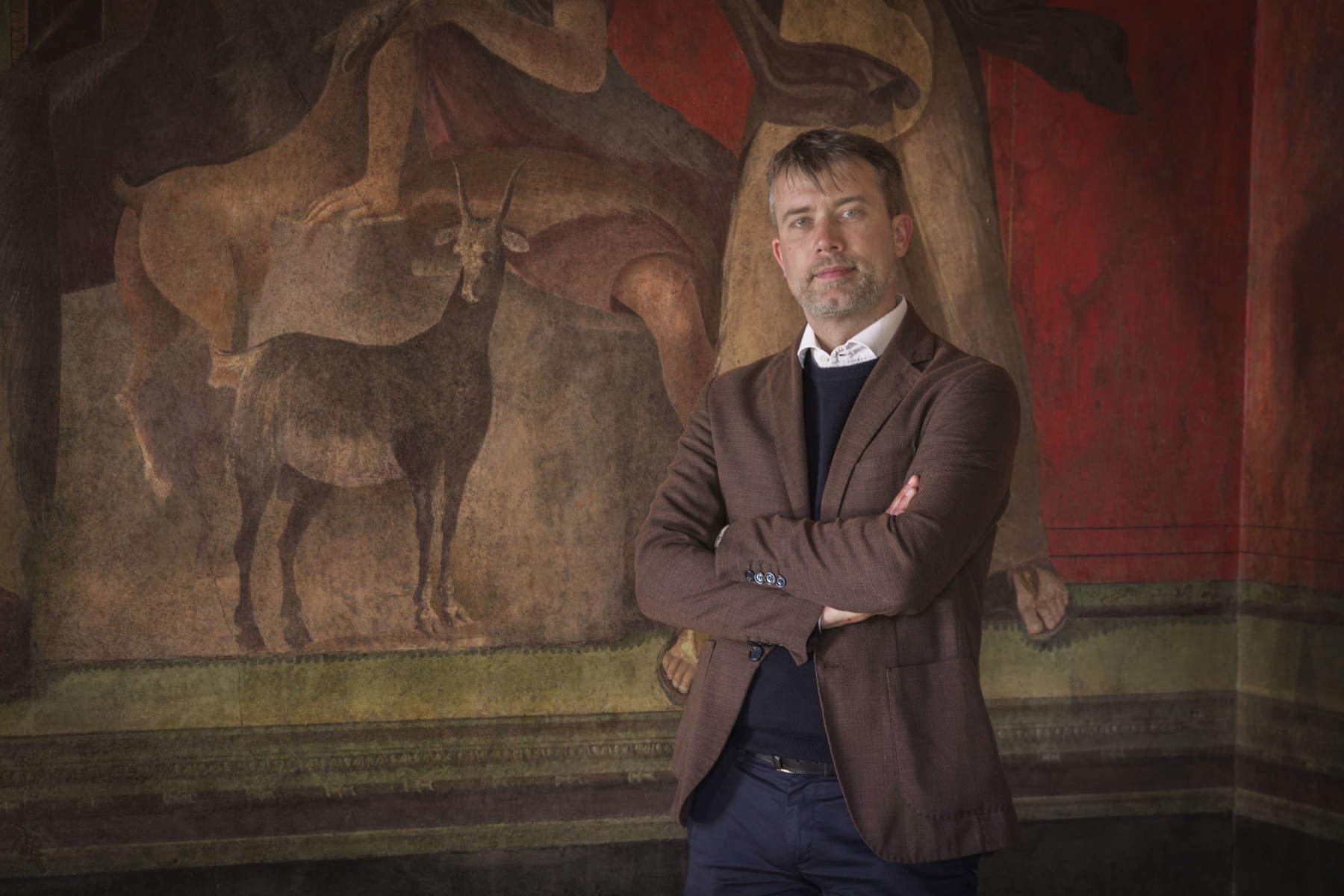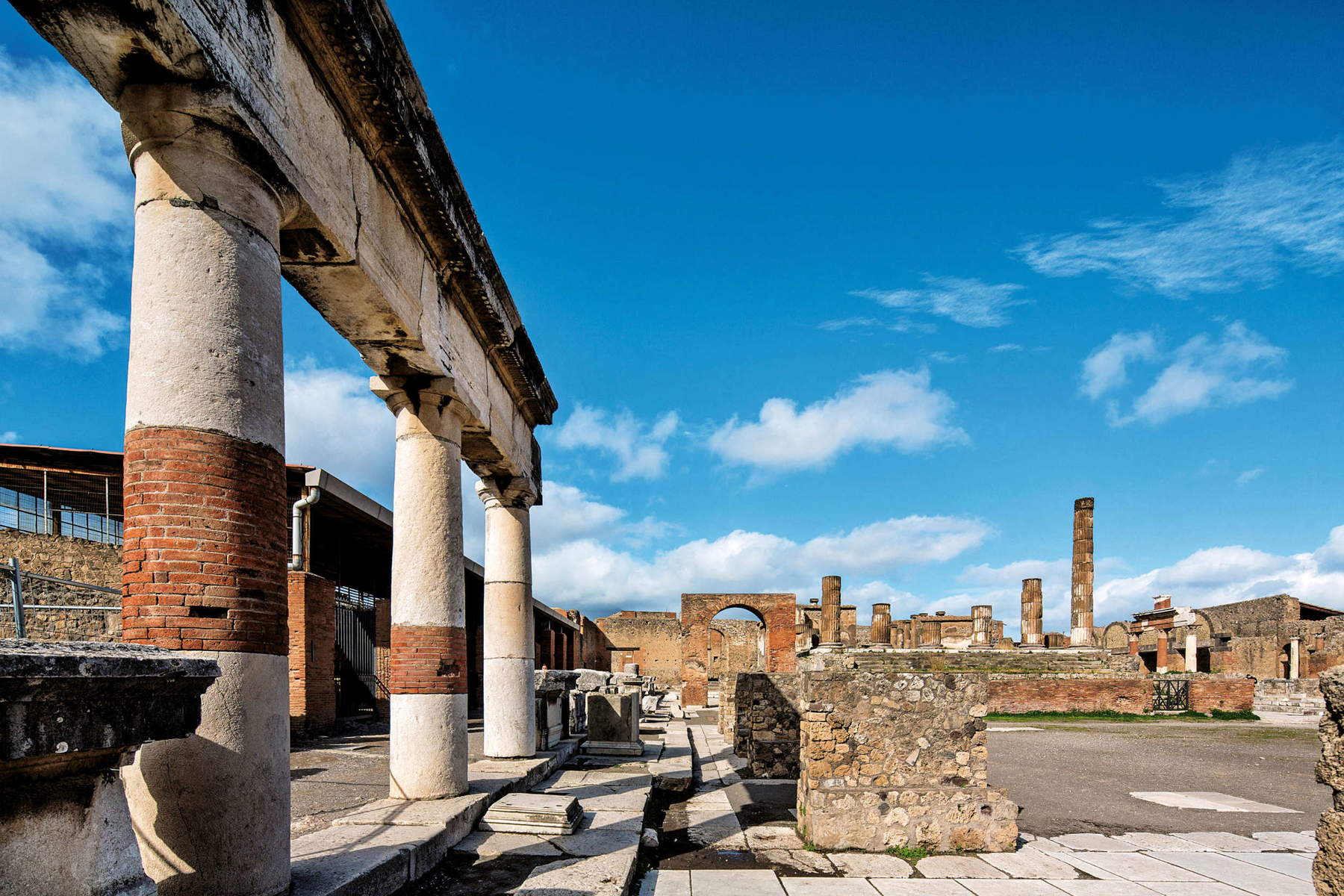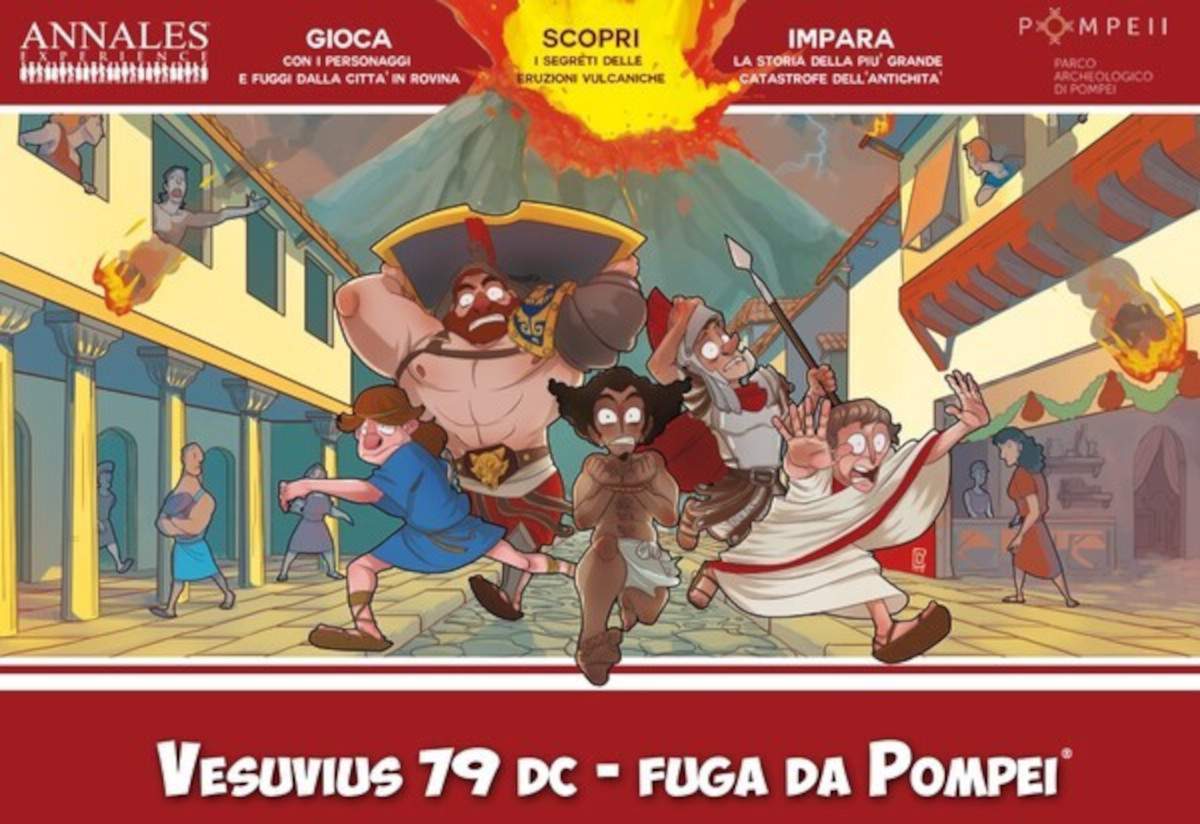"Pompeii is the world capital of archaeology." This is according to the director of the Pompeii Archaeological Park, Gabriel Zuchtriegel, who has led the institution for three years. A lot has been accomplished in this period: new excavations have been started, new discoveries have come (and more are to come), and the Park has also been very active on the communication front (the time when the Park sent out communiqués without even publishing scientific articles is over, the director assured us), and on enhancement. In this interview with Ilaria Baratta we take stock of new activities, communication, enhancement, and the future of the Park.

IB. You have been director of the Pompeii Archaeological Park since 2021. What is your assessment of these three years as director of the Park? What intervention or discovery would you say you are most proud of?
GZ. I think a balance sheet made by myself is not worth much: it will be the territory, citizens, schools, institutions, associations and businesses, the scientific community and the public that will take stock of these years. It has certainly been three years of challenges and growth, and I am proud above all of one thing: that in Pompeii we are a great team and that despite the complexity of our work we manage to develop innovative solutions for the protection and monitoring of heritage, research and enjoyment of the sites.
What image do you want to give of the Pompeii Archaeological Park?
A safe, welcoming, clean and accessible place ... that is, I would like nothing to come between the visitor or visitor and the beauty and significance of the ancient city and its territory. Pompeii is a bit like the archaeology capital of the world, and we want to live up to this great responsibility.
Since 2023, Greater Pompeii has been born: the widespread park of which the archaeological areas of Pompeii, Boscoreale, Oplontis, Stabia and the entire surrounding area are part, created to enhance precisely the entire Pompeian context. How was and how is this valorization materialized now?
The future of the excavations is outside the walls of the ancient city, I am convinced. There is still so much there to recover, to protect, to study and to enhance. We can, by working with the area, completely transform the cultural landscape around the ancient city, which is culturally rich but too little visited and known. Instead, in order to understand the history, it is essential to know the villas, the farms, the stopovers like the one at Oplonti, the agricultural and productive activities that existed here in ancient times. So, in addition to the integrated ticket and shuttle that connects the sites free of charge for all Park visitors, we are investing substantial sums in Boscoreale, Longola, Torre Annunziata, Civita Giuliana, and Castellammare di Stabia. We are also doing this thanks to the support of the Ministry for the vision of “Greater Pompeii”: recently Minister Sangiuliano visited the excavations of Civita Giuliana and descended along the six meters separating the 79 A.D. floor from the modern level to ascertain personally the great value of this research. These are important signs that encourage us to continue on the path that will result in the creation of a visitable site at Civita Giuliana, a suburban villa for years looted by grave robbers and since 2017 the subject of scientific investigation thanks to a memorandum of understanding with the Torre Annunziata Public Prosecutor’s Office. It will become a jewel of Greater Pompeii.
Pompeii Archaeological Park recently went on prime time TV on Rai1 with a special by Alberto Angela dedicated to the new discoveries made in the Insula dei Casti Amanti. It was a truly unique and unprecedented opportunity to present the Park’s new findings: how much effort did it take to produce this episode and how did you find working with the well-known popularizer and his team?
Quite a commitment, because it is a single two-hour sequence plan, meaning there are no cuts, it is all one shot. We had to do several rehearsals. But I must say that for all of us it was a pleasure to work with Alberto and his team, because we have so many things in common, especially the love for Pompeii. In meetings Alberto and I kept talking about archaeological issues, while the staff reminded us that there were also logistical and organizational problems to be solved. But we were caught up in the excitement of telling another Pompeii, the one behind the scenes, with restorers and archaeologists at work, and I hope you can feel that in the documentary as well.



Staying on this topic, the discoveries were previewed on TV by Alberto Angela even before the official releases of individual discoveries posted on the Park’s website. How important is the communication of the discoveries and how they are presented to the public? You yourself often explain them yourself through special videos....
From May 2023 we have a new rule: in Pompeii we make the “discovery” release only if a scientific article is ready, a first framing of the new data, which comes out in the same minute as the press release, online in our new “E-Journal of the Pompeii Ruins.” We are aiming for maximum accessibility and sharing of new data; the time is over when archaeologists could jealously hold onto data for years, sometimes decades. We need to be transparent, even in archaeology, not just with tenders and contracting. For me it is an ethical issue. Overall it has worked very well, not least because we have seen that many journalists have started to go deeper, reading the scientific texts. Colleagues are enthusiastic. In the case of RAI, it is true, we made an exception, Alberto Angela presented some news in preview... but the next morning they were online in our E-Journal, complete with bibliography and notes!
Unfortunately, some unpleasant incidents also happen: recent was the case of the tourist who was carving letters on a plaster of the House of the Ceii and was immediately stopped. The large flow of tourists also necessarily implies careful surveillance. How, in your opinion, can these cases of incivility be avoided?
We will still invest in security. But that is not enough. We also want to make the visit to Pompeii a more personalized and intimate experience, so to speak. We have record numbers right now, 2023 was the year with the most access ever in the history of the site, in 2024 we are still above last year’s numbers. We have started thinking about how to better manage these flows, thinking about forms of personalization and visit scheduling. Name-based ticketing and time slots for entry to the site, with the possibility of booking visits to some iconic places, could also help us. We will certainly do everything to ensure that the visit to Pompeii remains a magical experience, never one of mass tourism.
In 2025 you will open the Pompeii Children’s Museum, a space dedicated exclusively to children within the Park, but already this summer you are organizing itineraries and workshops for younger children. How important is it to also involve children in the discovery of archaeology and how?
A children’s space in a park like Pompeii should be the norm, since we have so many young visitors. So it shouldn’t even be news, but unfortunately it is because so much remains to be done to become truly inclusive. The idea is that if I come with my children (I say this as a father of two, 10 and 15) especially when they are young, I can entrust them to an activity, a space, where everything is explained so that they too can enjoy the visit; otherwise after five minutes they start to complain, and rightly so.
Speaking of young audiences, are many young people coming to visit the Park? And what is the relationship with schools like? Is it included in education?
In 2021 we started a new project, it’s called “Dream of Flying.” We are calling nationally prominent artists to work during the school year with teenagers from local schools. The director is Marco Martinelli, a brilliant man I met in Ravenna. We do classical theater, Aristophanes. At the end of the school year, we go on stage, in the Teatro Grande in Pompeii. We just finished the third year, it was one of the most beautiful experiences of my professional life, now we want to continue. What we see is that it totally changes their relationship with the heritage, with the site, with the history. And then, the play they are bringing on stage, a slightly retouched Aristophanes in Neapolitan dialect, or rather Torrese dialect, is really splendid. In the fall we will be guests at the festival in Vicenza.


To engage younger audiences, an educational board game, Vesuvius 79 AD.- Escape from Pompeii, for which the Park has provided scientific advice and full support. When will it be distributed and how much do you think we need to focus on these tools to bring young people closer to museums and archaeology?
The game is actually for all ages. But beyond that I think the problem is not about young people: it’s about all of society, we are all in danger of sinking in a flood of stimuli, images, news and fake news that inundate us through social, smartphones and television and no longer having the inner space that is essential to have a true cultural and artistic experience. We have forgotten the value of emptiness, the absence of stimulation, which for me is the essence of art: after listening to the Goldberg Variations performed by Beatrice Rana, a young and brilliant pianist from Puglia, or at the end of a great novel like Valeria Parella’s about Pompeii, La Fortuna, I feel this spiritual emptiness, I couldn’t describe it any other way, because the work puts you in touch with something bigger than you, erases for a moment our little “I.” This is true art, and Pompeii, I hope, can also represent this for all of us.
Let’s talk about accessibility, both physical and cognitive. An increasingly topical issue. How accessible is the Pompeii Archaeological Park and, if so, what could be done to make it even more accessible to all?
There is a “Pompeii for All” pathway with no architectural barriers, and we have started using LIS videos for the deaf. We also have projects and workshops for people with cognitive disabilities. But it is important to be aware that we can and must always do more, accessibility is not a project to be ticked off, but a path that always goes forward. Then it is cross-cutting in the sense that all our actions can also be evaluated in terms of accessibility.
In conclusion, what do you think the future of Pompeii will look like?
The future is in our hands, for some time, then others will come and we will no longer be there. This means that we have to enjoy life, as long as it is possible, as Trimalchio says in Satyricon, but also that we have to be aware of our great responsibility to future generations, to whom we will hand over the memory, the heritage, the art of the past. The big theme of these years is sustainability, and in fact our strategic plan, which we are working on, puts this theme at the center, in line with both the ministerial guideline and the UN Sustainable Development Goals.
Warning: the translation into English of the original Italian article was created using automatic tools. We undertake to review all articles, but we do not guarantee the total absence of inaccuracies in the translation due to the program. You can find the original by clicking on the ITA button. If you find any mistake,please contact us.